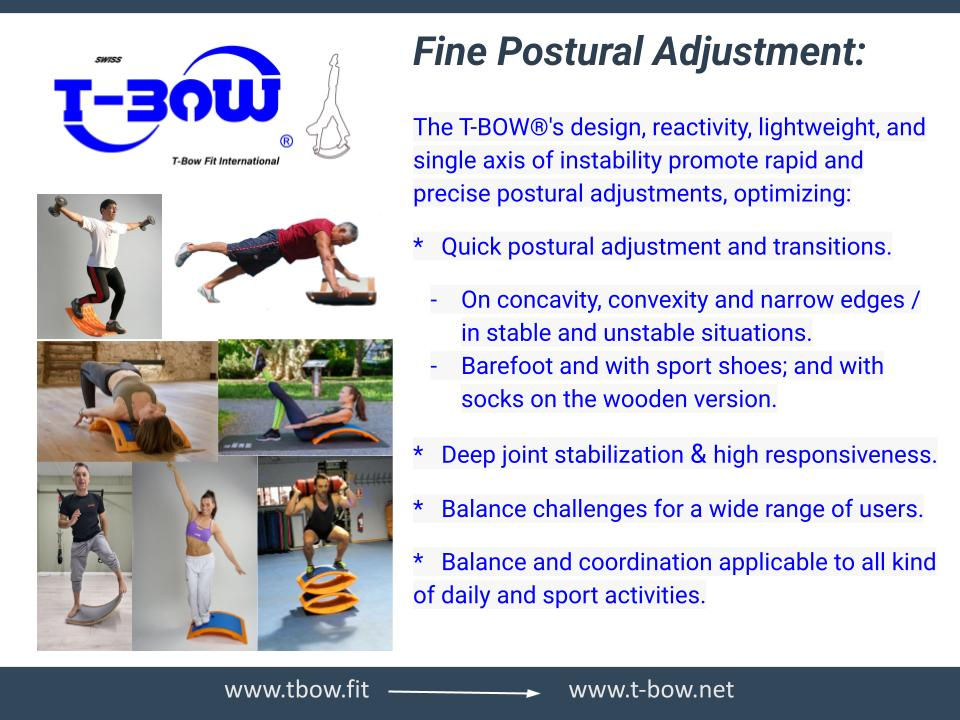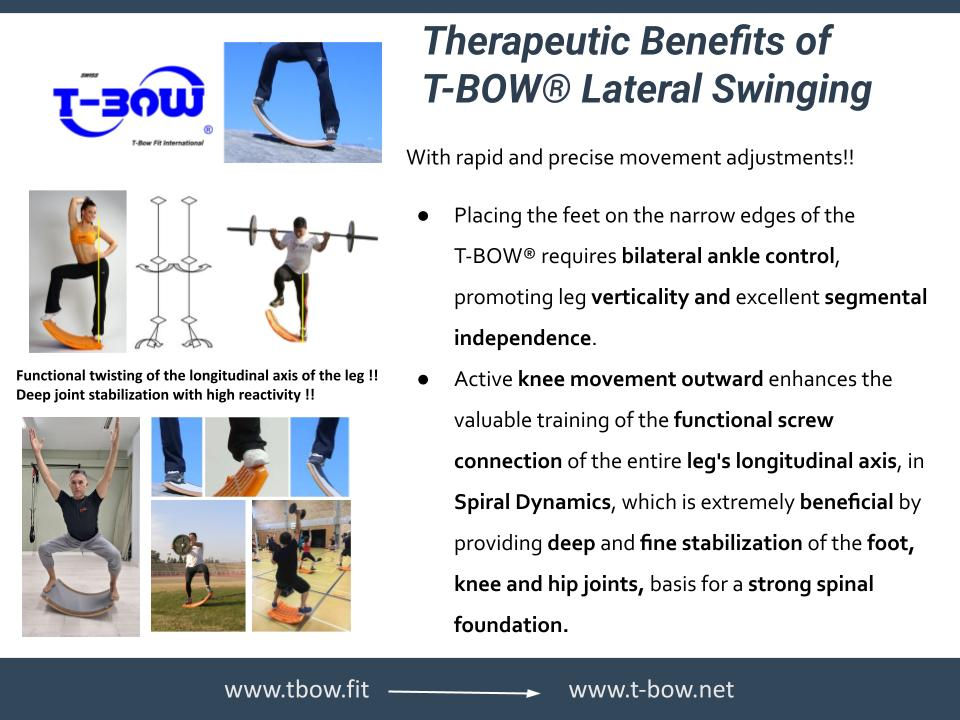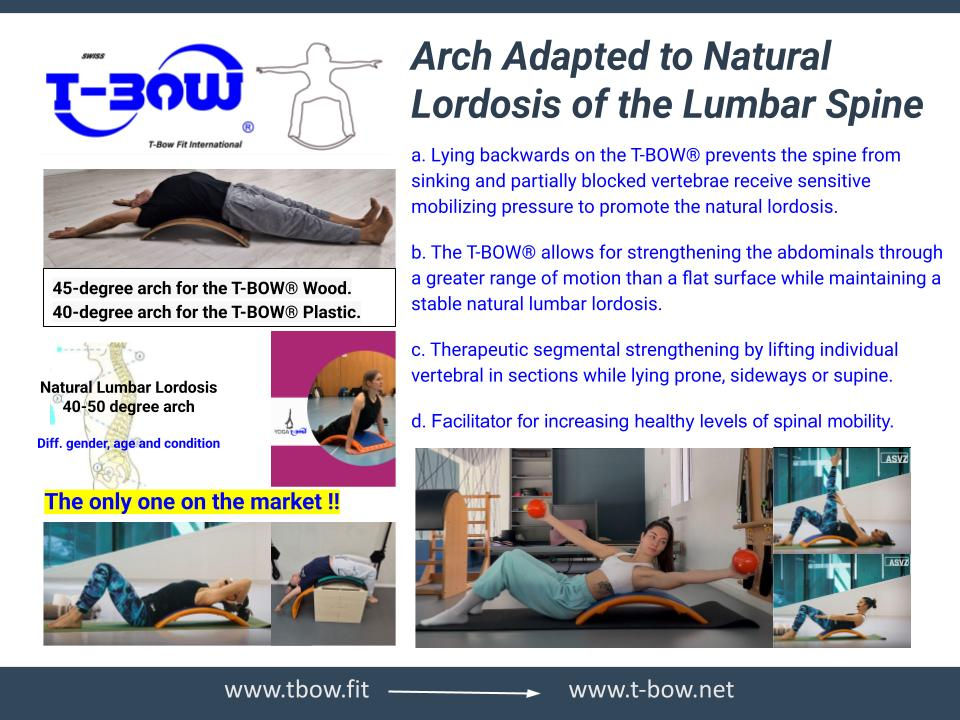Properties of T-BOW® for YOGA
- T-BOW TRAINING AND THERAPY
- Apr 5, 2022
- 3 min read
Updated: Aug 16

By F.Xavier García-Navarro, Sandra Bonacina, Ivan Farrer-Sánchez, Brenda Fiori-Carloni,
Hugo Pérez-Vivas y David Ribera-Nebot

The elastic and inertial property of the T-BOW® before fine movements causes very fast and reactive changes in any situation of static-dynamic equilibrium, hyperstimulating the body's proprioceptive systems; a very beneficial situation to optimize any posture.

Fine Postural Adjustment
The T-BOW®'s design, reactivity, lightweight, and single axis of instability promote rapid and precise postural adjustments, optimizing:
* Quick postural adjustment and transitions.
- On concavity, convexity and narrow edges / in stable and unstable situations.
- Barefoot and with sport shoes; and with socks on the wooden version.
* Deep joint stabilization & high responsiveness.
* Balance challenges for a wide range of users.
* Balance and coordination applicable to all kinds of daily and sport activities.

The T-BOW® has a single axis of imbalance that allows a gradation of balances from levels affordable for most people, providing security to the practitioner.
You can perform pirouettes (turns on the vertical axis) and thus have two axes of imbalance in this action. Two T-BOW® can be joined on their convex side to have two axes of constantly imbalance. Its narrow ends force to rebalance support with both sides of the foot, hyperstimulating segmental independence.

Therapeutic Benefits of T-BOW® Lateral Swinging
With rapid and precise movement adjustments!!
Placing the feet on the narrow edges of the T-BOW® requires bilateral ankle control, promoting leg verticality and excellent segmental independence.
Active knee movement outward enhances the valuable training of the functional screw connection of the entire leg's longitudinal axis, in spiral dynamics, which is extremely beneficial by providing deep and fine stabilization of the foot, knee and hip joints, basis for a strong spinal foundation.

In its unstable position, the T-BOW® allows you to swing (lateral, frontal and mixed) in simple and mixed supports of feet, knees, hips, trunk, hands, forearms, head and in triple- quadruple support, on its concave surface and lateral edges.
In its stable position, the T-BOW® allows supports of feet, knees, hips, hands, forearms, trunk, head and in triple- quadruple support, on the mat of its convex surface.

The unstable double T-BOW® (two T-BOW® joined by their concave face) allows the same supports as in its stable position but in particularly reactive rocking conditions. These very reactive and balanced motor situations on T-BOW® are a differential source of body support experiences that bring extraordinary richness to postural optimization resources.


The supports on the T-BOW® can be less aggressive and more pleasant for the hands than on the flat floor, since the convex curvature of the T-BOW® allows an angulation that reduces the overload on the wrists.


The support of the feet in the inclined plane of the T-BOW® enriches any posture by enabling a greater range of amplitudes for the ankle joint than on a flat surface. The functional rotation of the longitudinal axis of the leg is easier to train on the T-BOW® than on the flat ground.

Both barefoot, with good grip socks, and with sneakers, comfortable and effective supports are achieved. The granulate on the concave surface that makes the supports safer (less slippery) and the mat on the convex part is reactive, sensitive and comfortable to body contact.

Being able to support the hip at different heights of the convex surface of the T-BOW® allows to adapt the sitting posture of the yogi according to its limitations of flexibility in the coxo-femoral joint with the lumbar spine. The higher hip supports facilitate postures for stretching and joint mobility.

The arched design of the T-BOW® (adapted to the lumbar lordosis of the spine) favors a kinesiological adaptation to the curvatures of the spine and great stability, enhancing (with degrees of amplitude greater than a flat base) its mobility in extension, flexion and rotation, as well as the strengthening of the frontal, posterior (with lower or upper back priority) and Partially blocked vertebrae receive a gentle mobilizing pressure when stretching on their backs on the T-BOW® and without sinking, unlike on softer surfaces. The balance on the double T-BOW® enriches these options.


T-BOW® Arch Adapted to Natural Lordosis of the Lumbar Spine in Healthy Adults
a. Lying backwards on the T-BOW® prevents the spine from sinking and partially blocked vertebrae receive sensitive mobilizing pressure to promote the natural lumbar lordosis.
b. The T-BOW® allows for strengthening the abdominals through a greater range of motion than a flat surface while maintaining a stable natural lumbar lordosis.
c. Therapeutic segmental strengthening by lifting individual vertebral in sections while lying prone, sideways or supine.
d. Facilitator for increasing healthy levels of spinal mobility.
The stable-unstable T-BOW® trains deep stabilizing muscles, important for the back and all joints.

And coordination sequences and postures can also be designed to prioritize static-dynamic relaxation (segmental and global).



















Comments